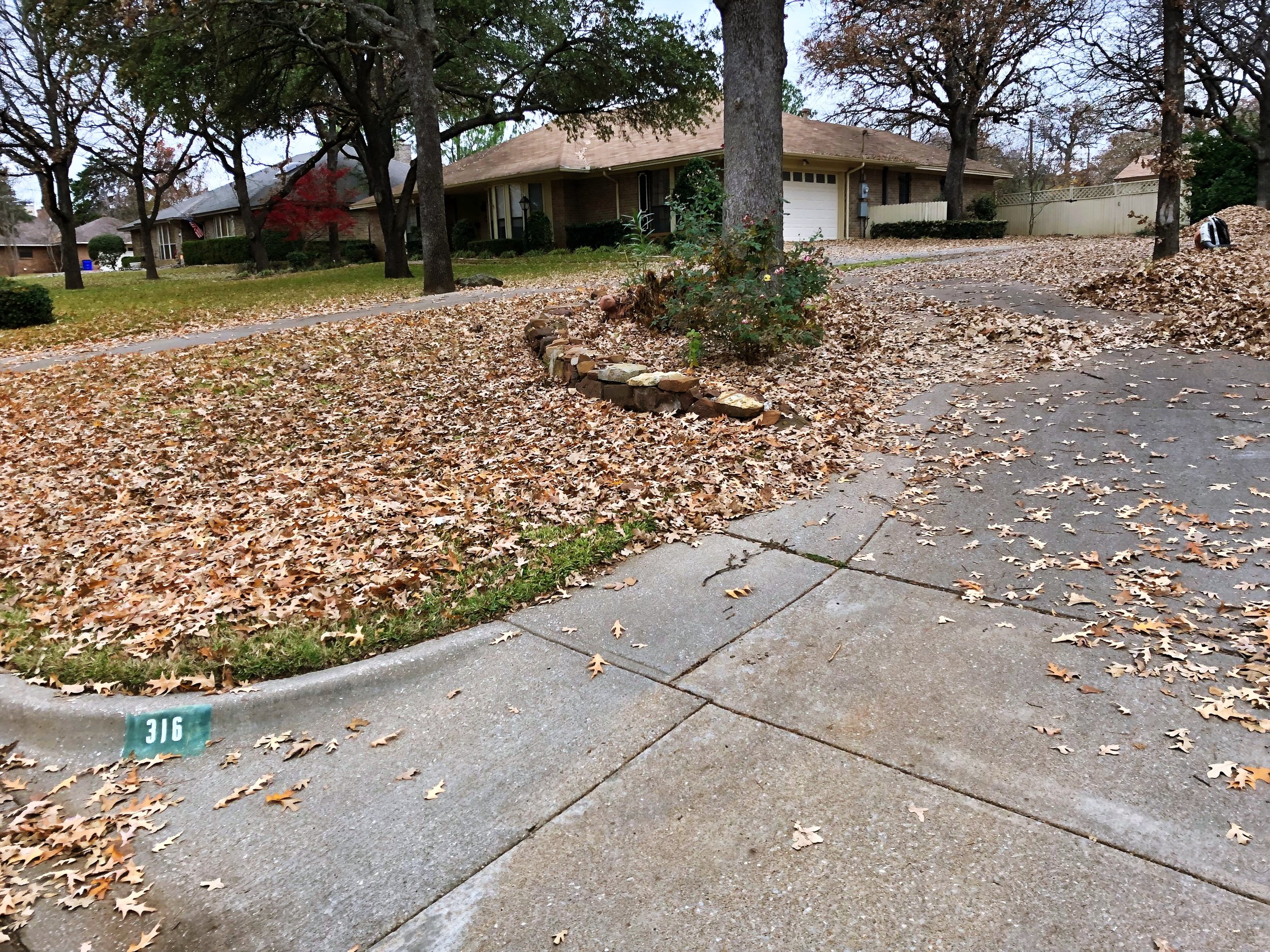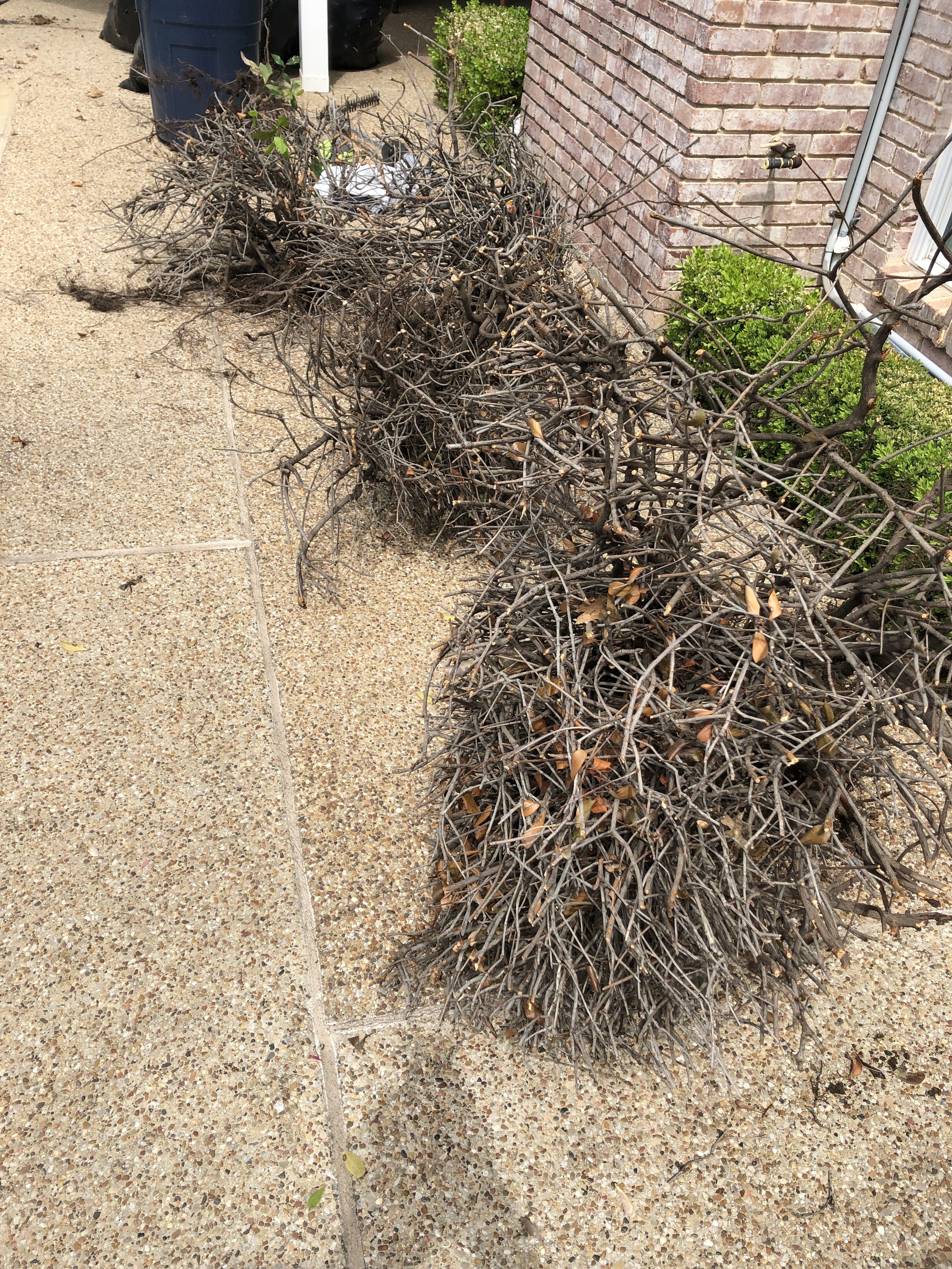Well, you are here in Texas in the latter part of our winters and you are wondering what lawn and garden tasks you can do. Questions I receive each year include: “When can I plant?”, “What can I plant?”, “How do I plant?”, “Can I cut back my...”, “When do I fertilize?”, “When do I apply a weed killer and pre-emergent?”, this list goes on and on.
I’ll start with the basics, but just remember our Texas weather can change from year to year and so what may be good timing this year may not be a sure thing every year. The best way to make decisions for uncovering plants, planting/seeding, tree trimming, or cleanup work can vary on our frost dates and when the weather is accommodating enough to get out and do yard work.
Planting in North Texas in February
Yellow Pansies from Euless, Texas Nursery
In February, I like to hold off on planting any tender plants or vegetables till mid-march. If you want a good start to a summer garden, then hoop houses or starting plants indoors near a sunny window 4-8 weeks before the last frost date will allow for transplanting when the ground has warmed up and nighttime temperatures aren’t dipping into the forties. Patience is a virtue and just because the hardware stores have tomatoes out doesn’t mean it’s wise to plant them. Wait till the last frost has passed and get them out in the garden that weekend or as soon as possible afterward.
Winter is not the best time to plant but it is also not the worst time to plant. Cold hardy trees in shrubs can do great being planted in Texas winters. I don’t recommend planting when ice is on the ground but if you can wait for some nice weather to show up. Then that would be sufficient to dig some holes and add composted cow manure with soil amendments such as Texas greensand (glauconite), lava sand, mushroom compost, or organic fertilizers tilled all in with the existing soil. A good ratio for good root growth would be a planting mix that has 1/3 existing topsoil, 1/3 composted cow manure, and 1/3 tree and shrub planting mix. The soil amendments can be added in small amounts with the recommended amounts listed on the bags. Some of the below plants may have special soil requirements, so always check the plant’s individual plant requirements before purchasing.
Plants that can be planted in February
Cool Season Crops
Dusty Miller
Pansies
Liriope
Mondo Grass
Dwarf Mondo Grass
Asian Jasmine
Sod such as Bermuda, St. Augustine, and Zoysia
Roses (Please don’t buy knockout roses, they will get a disease known as rosette virus and look terrible)
Abelias
Nandinas
Grapes
Blackberries
Raspberries
Blueberries
Crepe Myrtles
Oak Trees
Hollys
Magnolias
Texas or Oklahoma Redbud
Junipers
Conifer trees
Peach Tree
Pear Tree
Almond Tree
Pecan Tree
Texas Winter LANDSCAPE Tasks
There is not nearly as much going on as in spring and summer, but still, plenty that can be done to improve the landscape before spring showers. February garden tasks may be duller but needed for the lawn and garden to have a better start to spring. I recommend cleaning up all or as many leaves as you can. Grants Outdoor A-Team generally spreads the leaves over the lawn and mulches all of the leaves up one or two times and then we follow with a bag and collect the rest. This is our typical winter cleanup along with shrub removal and other seasonal cleanup jobs. The lawn and landscape waste can be recycled and used in a compost bin. Multiple cities in DFW have different services that allow for the recycling of lawn and landscaping waste. After the lawn and beds are cleaned up, it’s easier to see what needs to be completed in your landscape in regards to plants needing care.
Tilling in late winter or early spring
February Garden
TO DO LIST:
Tilling garden beds or areas in the lawn you want to grow grass
Planting cool-season crops
Trim back roses in the latter part of the month.
Trim ornamental grasses down to one-third of their current size if they have not been pruned back earlier in the winter
Thin out Nandinas by removing one-third of the tallest canes or out of shape canes
Thin out Abelias by removing several of the largest canes or out of shape canes
Thin out Crepe Myrtles by removing rubbing branches, branches that are diseased or dead. I also like to remove suckers growing from the bottom of the crepe myrtle
DO NOT COMMIT CREPE MURDER
Side note: if you are unaware of crepe murder. It is topping crape myrtles to keep its size limited and to encourage blooms (it’s not the recommended method by Landscape Experts in Texas). If you care to know more, I’ll have a post dedicated to crepe myrtle care in Texas and crepe murder.
Texas Frost Protection in February
If you have plants that require frost blankets, then keep those on for the cool days and nights to prevent frost damage and remove the blankets on sunny above freezing days. once the last frost has passed, then you can remove those and put them away for next year. Texas has weird freeze patterns, so maybe keeping any coverings stashed away for a quick reinstall if a sudden freeze is expected. After mid-march, you should be in the clear for the season. The major Texas freeze in 2021 caused many plants to die or in some cases, the roots survived but nothing above ground. Plant Blankets saved many landscapes from utter destruction and maybe a worthy investment. It’s probably a DIY task in Texas unless you can find a reliable lawn company in DFW that can do these tasks.
Removing dead Indian Hawthorne shrubs







